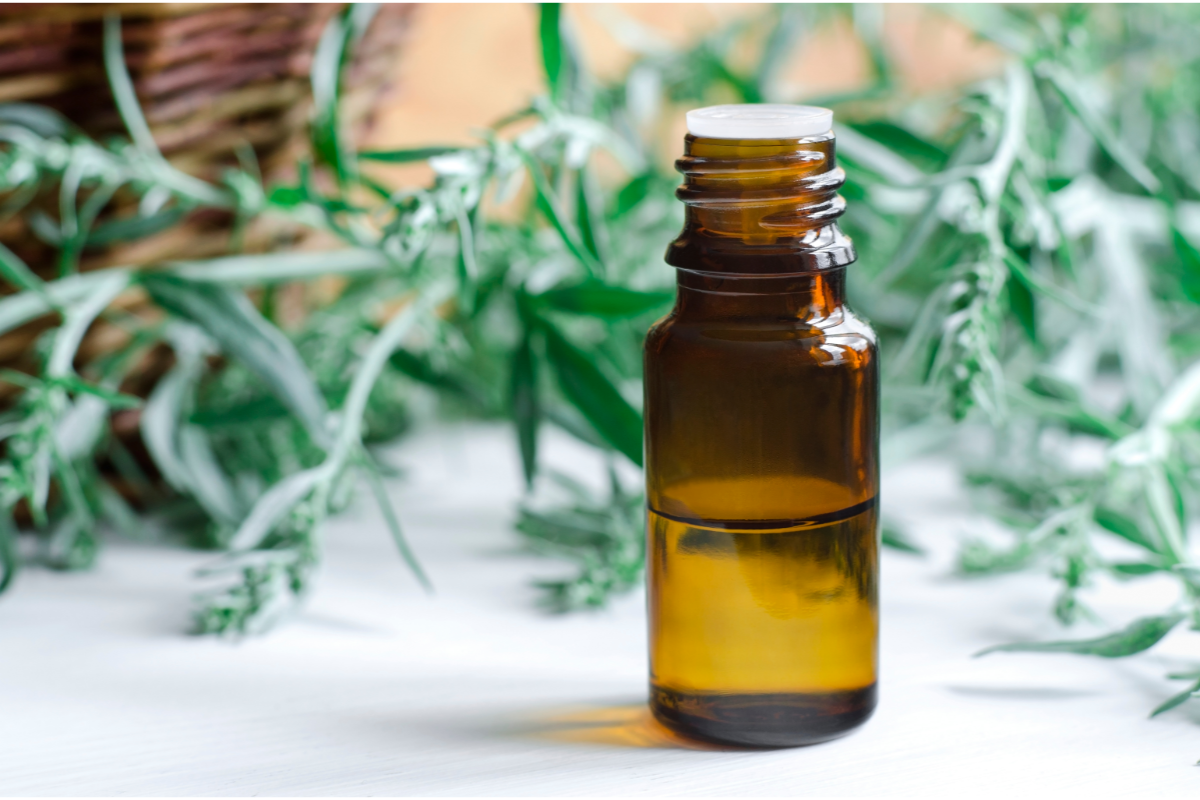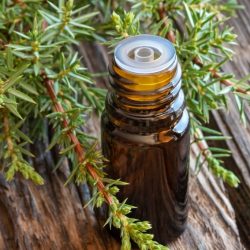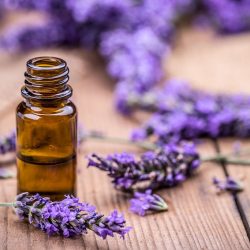The art of herbal medicine is full of unsuspected treasures, and among them, mugwort stands out for its captivating properties. In this article, we explore the many facets of this enigmatic plant, often associated with dreams and the moon. Its essence, both bewitching and mysterious, has stood the test of time, seducing lovers of natural remedies with its therapeutic virtues and traditional uses. Let’s discover together the secrets of mugwort, a plant elixir that awakens the imagination and promises to reveal the close links between nature and the dream world.
What are the characteristics of mugwort?
Artemisia Vulgaris, commonly known asmugwort, is a perennial plant with distinctive morphological features. Mugwort, whose botanical name is Artemisia vulgaris L., belongs to the Asteraceae family.
What are its botanical attributes?
The stem of mugwort generally measures between 7 and 12 decimetres. It is a herbaceous plant with a reddish tinge and a fine layer of hairs. It has a branched stem.
The leaves of this plant can be either pinnate or bipinnate. They are oblong-lanceolate with an auriculate base. The leaves are acute and glabrous, although in rare cases they may have a whitish or ashy tinge on their upper surface. On the other hand, the underside of the leaves is generally white and tomentose.
The involucre of mugwort is white and tomentose in texture. The receptacle of the plant is hairless. Mugwort flower heads are ovate-oblong and almost stalkless. They are grouped in glomerules on the branches, which are spread out and upright, forming a large leafy panicle. Mugwort flowers are yellowish or reddish in colour.
It should be noted that this plant can present variations, particularly when its stump emits numerous shoots. In such situations, the leaves may have narrower, elongated segments. The flower heads may be solitary and reddish in colour. This variant is known asArtemisia verlotorum Lamt.
What about harvesting it?
Artemisia vulgaris is found mainly in uncultivated areas throughout France, including Corsica. Its range extends acrossEurope, Siberia andnorthern Africa. It usually flowers from July to September.
Known as one of the seven Midsummer plants, mugwort was best picked at the time of the summer solstice. It was best picked at dawn, before the Sun’s rays had touched the Earth, in the sign of Virgo.
The leaves, flowering tops and roots are traditionally used in herbal medicine.
What are the uses of Mugwort essential oil?
As mugwort essential oil is rich in ketone, it is part of the pharmaceutical monopoly. According to article D. 4211-1 (amended by decree no. 2007-1198 of 3 August 2007 – art 1 JORF 8 August 2007 corrected 18 August 2007), mugwort essential oil is only available on the advice of a pharmacist or on prescription.
How does it work?
Composed of a variety of active constituents, mugwort is distinguished essentially by the following characteristics:
- A predominant concentration of 1-8-cineole, camphor, linalool
- ketones such as thujone
- The presence of resins.
- The presence of tannins and flavonoids
- A significant proportion of coumarins such as umbelliferone
- Sesquiterpene lactones, including yomogin and vulgarin
This plant, with its many beneficial properties, is generally recommended for relieving painful menstruation. Its emmenagogue action is effective in treating menstrual irregularities in women. It is particularly effective in dysmenorrhoea and amenorrhoea, stimulating uterine contractions.
Mugwort is frequently recommended for the treatment of a wide range of health problems. It is used to manage digestive disorders,ease joint and muscle pain, stimulate appetite in cases of anorexia, relieve spasms,improve sleep in cases of insomnia, anderadicate intestinal worms. It also has antibacterial, tonic and diuretic properties. With its antifungal, antiparasitic and antibacterial properties, this medicinal plant is invaluable in the fight against various parasitic infestations. It is used effectively to fight urinary tract infections, treat nasal catarrh, relieve respiratory tract ailments and combat bronchial infections. As a diuretic, it can also be used to treat oedema and high blood pressure. It is also highly effective in cases of water retention.
It should also be noted that this medicinal plant also acts as a monoamine oxidase inhibitor (MAOI). This makes it a potential antidepressant.
How should it be used?
Mugwort essential oil is mainly used for rubbing on areas of the body that are in pain. This may be the result of fatigue, muscular tension or specific conditions such as rheumatism. It must be diluted withvegetable oil to prevent skin irritation. The recommended dosage is a mixture of 30% essential oil and 70% vegetable oil.
When used internally, mugwort is effective in soothing various gastrointestinal disorders. These include colic, chronic diarrhoea, visceral pain, feelings of distension and flatulence. It also has a stimulating effect on the secretion of gastric juice, which promotes appetite. It is also a powerful vermifuge, helping to eliminate intestinal worms.
When applied externally, Mugwort, particularly in rubbed form, is highly effective in relieving a variety of ailments. It can provide effective relief from abdominal pain, chest pain and muscular tension frequently experienced in the lower limbs, especially after strenuous physical activity. It is also a beneficial treatment for phlebitis and varicose veins, stimulating blood circulation and making it a good option for heavy legs.
In traditional Chinese medicine, the use of dried mugwort sticks in moxibustion is proving extremely useful in the treatment of a variety of ailments.
Finally, it should be noted that mugwort has a number of additional uses, including managing epileptic seizures and repelling insect pests by diffusing its essential oil.
What are the contraindications?
Because it is oestrogen-like, mugwort should be avoided in a number of situations:
- Throughout pregnancy, as it could interfere with the hormonal system.
- In the presence of cysts, where its action could potentially aggravate the situation.
- In cases of mastosis, where its oestrogen-like effect may have undesirable consequences.
- In the case of hormone-dependent cancers, as Mugwort could stimulate the growth of cancer cells.
As with any phytotherapeutic treatment, compliance with the dosage is crucial. An overdose or prolonged course of Mugwort can have harmful effects on the liver and nervous system, underlining the importance of using this medicinal plant prudently and wisely.
What does the research say?
With regard to its main properties, a study published in 2009 by AU Khan and his team, carried out partly in vitro and partly in vivo, confirmed the antispasmodic, antidiarrhoeal, bronchodilator and tracheo-relaxant effects of an extract of mugwort. In addition, this study made it possible to explore, at least in part, the underlying mechanisms of action, in particular the anticholinergic effect and calcium antagonism. It is important to note that these results represent only a preliminary phase of research, but they provide valuable insights into some of the traditional applications of mugwort.
Mugwort: An effective weapon against malaria?
Numerous studies have examined the efficacy of artemisinin extracted from annual mugwort (Artemisia annua) in the treatment of malaria. The pharmaceutical industry usesartemisinin derivatives, such as artesunate, in the manufacture of anti-malarial drugs. Annual mugwort is an ancient component of the Traditional Chinese Medicine pharmacopoeia. It has been used for centuries to treat malaria-related fevers.
Plasmodium falciparum is the most widespread parasite in the world and the main cause of malaria. It has developed resistance to conventional antimalarial treatments, such as chloroquine. This is where artemisinin comes into its own, as it remains effective against chloroquine-resistant strains. In 2018, malaria caused more than 400,000 deaths worldwide.
Artemisinin is also present in mugwort(Artemisia vulgaris), although this plant has been the subject of fewer scientific studies. However, existing research confirms its antimalarial effects.
A 2013 study by GS Bamunuarachchi and his team validated the anti-parasitic activity of an extract of Artemisia vulgaris leaves on a mouse malaria model, similar to that caused by Plasmodium falciparum. The study also demonstrated the absence of toxicity, particularly at liver, kidney and haematological levels.
In 2014, the same team conducted another study to assess the antiparasitic efficacy of an extract ofArtemisia vulgaris leaves on a mouse malaria model. This time with a severe form of the disease. The results confirmed the anti-parasitic effect. They also highlighted an increase in survival, a reduction in the severe forms of the disease, and the antipyretic activity of mugwort extract. In addition, there were improvements in the haematological abnormalities associated with the disease, particularly with regard to blood platelets.
Mugwort essential oil: An antiviral weapon against COVID-19?
Although mugwort has not been directly tested, scientific studies have focused on theantiviral efficacy of artemisinin. The aim of this research was to evaluate the antiviral effects of artemisinin and its derivatives, used by the pharmaceutical industry, on various DNA and RNA viruses. These viruses included human cytomegalovirus, human herpes simplex virus, hepatitis B virus, hepatitis C virus, human immunodeficiency virus, Zika virus and polyomavirus.
Scientific studies have been launched to assess the in vitro effects of artemisinin and its derivatives on SARS-CoV-2, the virus responsible for the Covid-19 pandemic. This approach stems from the solid documentation of artemisinin’s antiviral properties. Its aim is to gain a better understanding of its potential as a treatment against the coronavirus. Initial results have confirmed the in vitro antiviral activity of artemisinin and its derivatives against SARS-CoV-2. Although encouraging, these results remain preliminary, and further research is needed to investigate this issue further.
Mugwort: An ally in the fight against cancer?
Mugwort has been the subject of numerous studies as ananti-cancer agent, both in vitro and on animal models. These studies have produced particularly promising results. They have revealed anti-cancer effects on various types of cancer cells, particularly those in the colon, liver and lungs. Some of the underlying mechanisms have also been partially identified. As a result, mugwort has become an intriguing avenue to explore for the development of new molecules in cancer chemotherapy.
For example, a study conducted by G. Lian and his team in 2018 confirmed that applying an extract of Artemisia vulgaris to colon cancer cells produced anti-tumour effects. These effects were manifested by induction of autophagy, suppression of cell migration and loss of mitochondrial membrane potential. The mechanisms converge towards a cytotoxic effect of mugwort extract on cancer cells.
These results, although preliminary, pave the way for further exploration of mugwort as a possible anti-cancer agent. They suggest its potential as a source of inspiration for the development of new therapies in oncology.
What historical role has mugwort played over the centuries?
What uses did mugwort have in ancient times?
The history of mugwort is ancient and deeply rooted in cultures around the world. Native to temperate regions such as Europe, North America and Asia, this herbaceous plant has been recognised since Antiquity. The Gauls referred to it as ” ponema “, while its genus name is a reference to Artemis, the Greek goddess of nature and hunting, associated with femininity and women’s issues.
Legend suggests that Artemis discovered mugwort. She then shared the plant with the centaur Chiron, who named her after the goddess. These stories take us back to the beginnings of the interaction between humans and mugwort, a story that goes back thousands of years and continues to evolve.
Recent discoveries have also shed new light on this relationship. For example, traces of mugwort have been found in the vicinity of the Lascaux site, dating from around 18,000 to 17,000 BC. These discoveries suggest that humans and mugwort have had a relationship for almost 20,000 years.
Greek ( Dioscorides in the first century) and Arab-Persian ( Avicenna in the tenth century) medicines mention mugwort for treating various ailments. These included headaches, colds, coryza and regulating menstruation.
Dioscorides and Pliny identified mugwort by the common name ” Artemisia “. The plant is often associated with gynaecological applications. For example, it was used to prepare women for childbirth and to encourage uterine contractions. It also enjoyed a reputation for its effectiveness in treating urinary lithiasis and as a diuretic.
Even the Roman legionaries were aware of the benefits of mugwort. They used to slip this plant into their shoes to relieve the fatigue associated with walking.
The Chinese medical tradition also adopted mugwort, using it in the form of moxas. These sticks of dried mugwort were burnt near the meridians to heat the acupuncture points. This practice is called moxibustion.
So the history of mugwort is a story rich in culture and tradition. It continues to reveal new perspectives on the benefits of this ancient plant.
How was it used in the Middle Ages?
Mugwort, also known asfireweed, has a rich and diverse history of use across different cultures and eras. Its traditional uses date back to the Middle Ages and beyond.
In the Middle Ages, mugwort was used to make bronze-coloured ink by mixing alum and iron salts. It was also recommended by renowned medical figures. In the 13th century, Ibn al Baytar recommended it for treating dizziness and as a vermifuge.
The name“fire herb” comes from a medieval tradition in which mugwort was worn in rosaries (often in association with verbena) during the Feast of St John. It was believed that looking through sprays of mugwort while wearing the rosary would protect the eyes and general health for the coming year. Wearing mugwort was believed to provide protection from evil spirits, poison, water, fire and all forms of evil.
Herb-aux-centgoûts, another name given to mugwort, dates back to the twelfth century. St Hildegard recommended cooking it as a vegetable, claiming that it soothed ailing intestines and warmed cold stomachs. People also used the plant to treat ulcers, as well as infected and inflamed wounds. Mugwort was recognised for its gynaecological and abortifacient properties, as theSalerno school mentioned.
Mugwort had a wide range of uses, including prophetic rituals. For example, people used mugwort to predict the face of their future fiancé by passing a sprig of mugwort through the flames of the Midsummer fire. Mugwort infusion was also used to purify crystal balls and facilitate divinations.
In short, mugwort has survived the centuries as a plant with many uses, including medicinal, magical and divinatory. This reflects its versatility and importance in ancient cultures.
What do we say about it in modern times?
The uses of mugwort vary and have a long history in different cultures. American Indians often consider it to be a form of “sage”. They use it mainly for spiritual purification, to ward off evil spirits and negative energies.
Mugwort is also said to have properties associated with inducing lucid dreams and astral travel. Smoking or consuming this plant before sleep is reputed to intensify dreams, strengthen their control and make them easier to remember. Ancient American civilisations, such as the Aztecs, used it for ritual and medicinal purposes.
In 18th-century Normandy, mugwort was used to dye wool in shades of “musk” and “olive”. However, this plant did not arouse much interest among dyers, with the exception of a few uses in northern Europe.
Medicinally, mugwort was known to have stimulant and antispasmodic properties. Its root has been used since the 16th century to treat hysteria and epilepsy. It was also used to induce menstruation and combat chlorosis. Practitioners such as Jean Fernel, Zacutus Lusitanus, Simon Paulli and others supported the efficacy of mugwort root against epilepsy, particularly between the sixteenth and eighteenth centuries.
Despite conflicting opinions, mugwort has retained its reputation as a plant with many uses. Frequently linked to purification rituals, protection against harmful influences, stimulation of dreams, applications as a tincture and its use in traditional medicine, mugwort has been recognised throughout its history as an important plant for women and an effective treatment for a variety of ailments.







